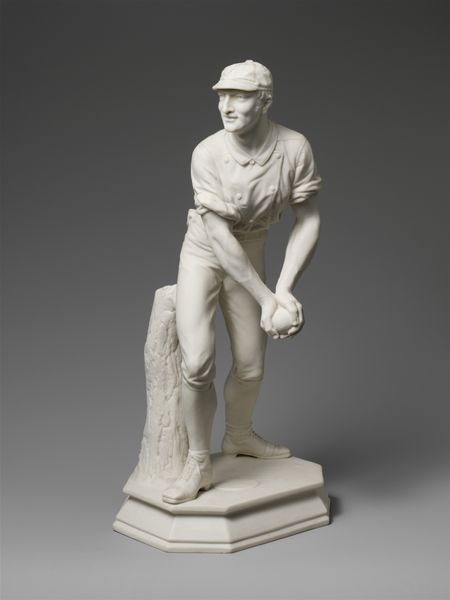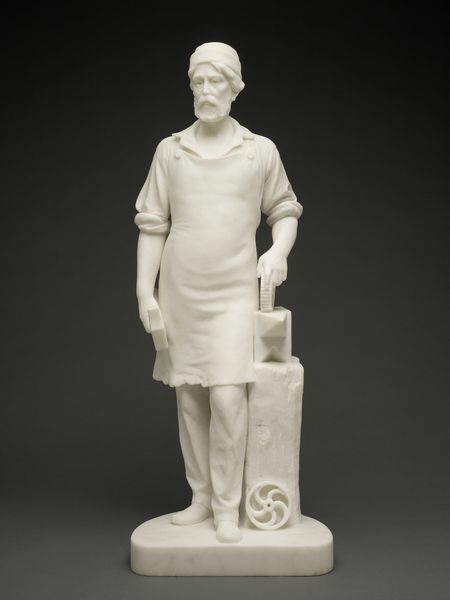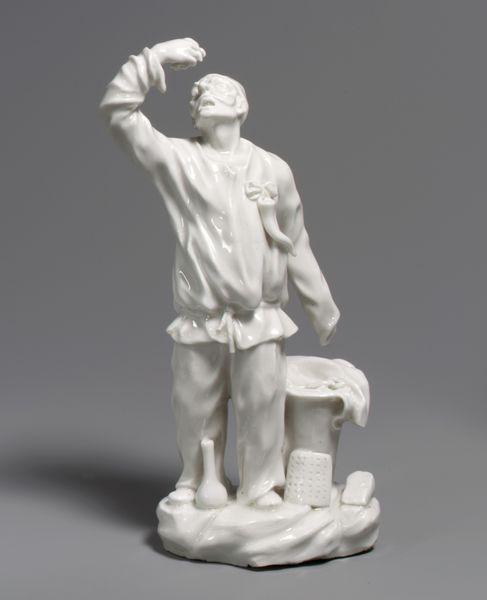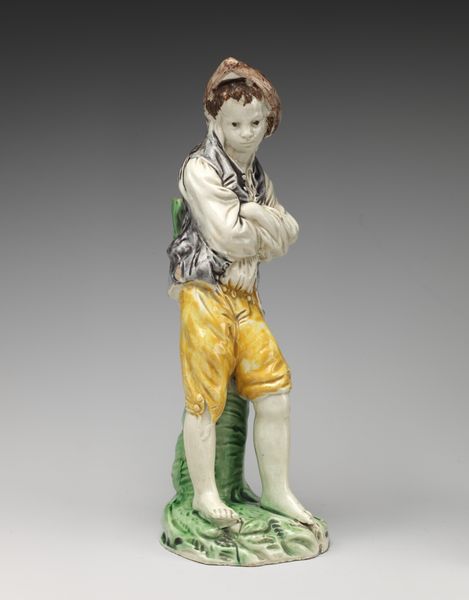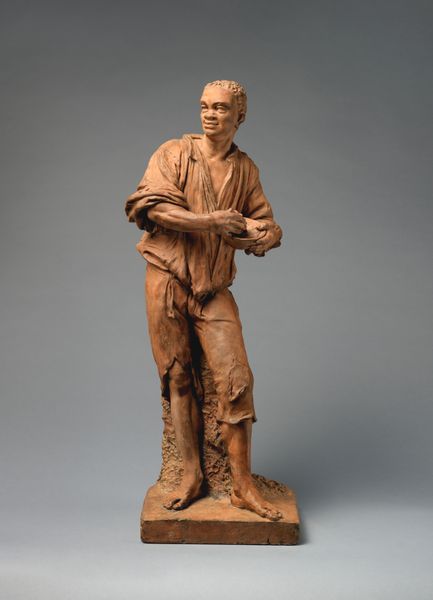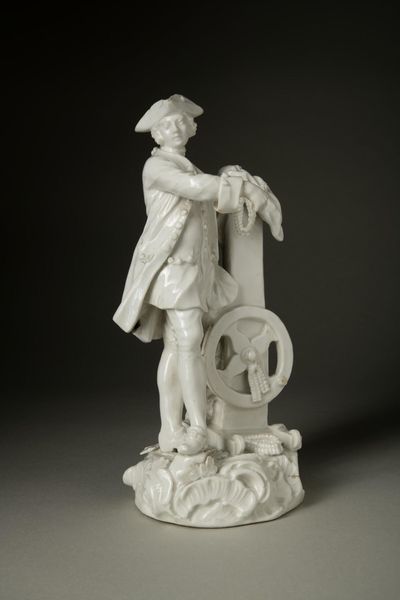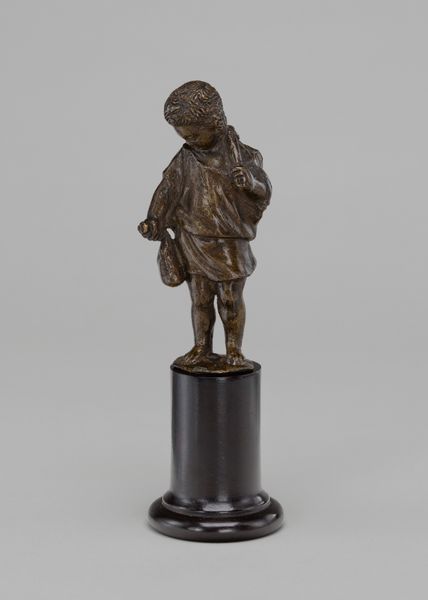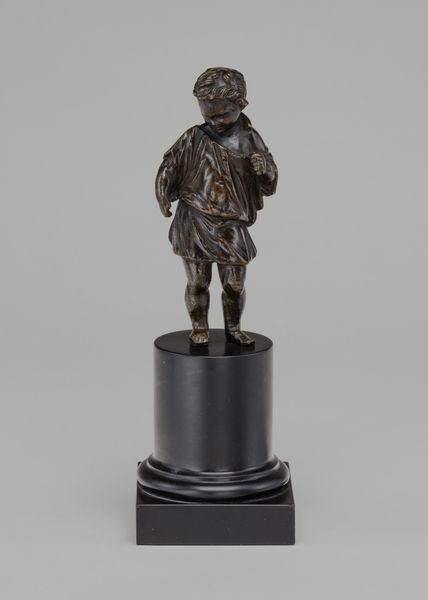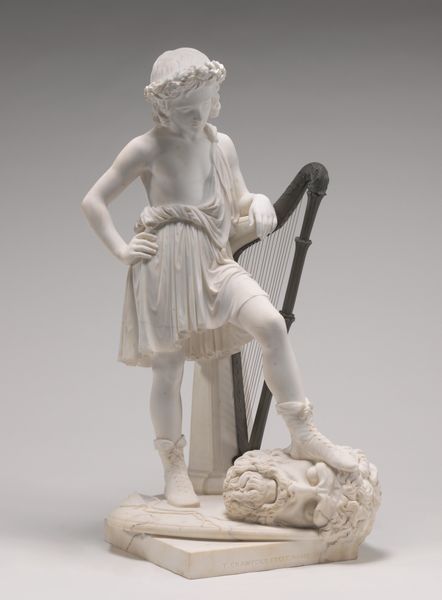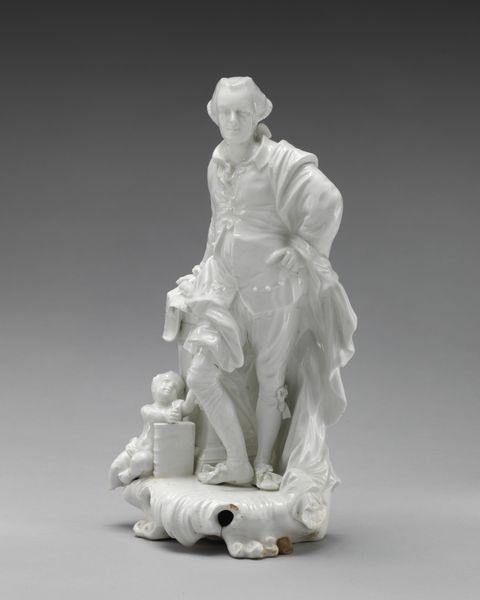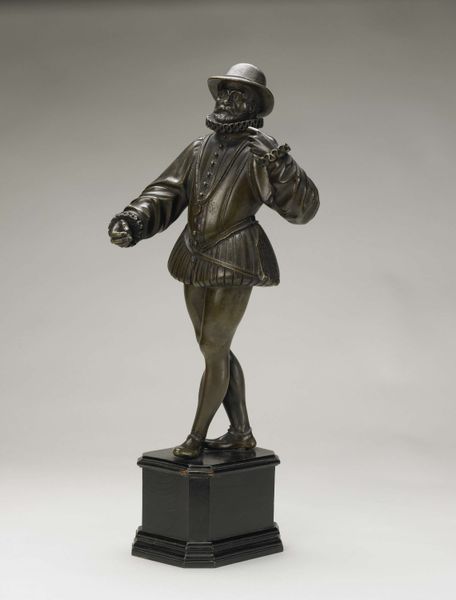
sculpture, marble
#
portrait
#
16_19th-century
#
neoclassicism
#
sculpture
#
sculpture
#
academic-art
#
marble
#
realism
Dimensions: 74.9 × 29.9 × 22.9 cm (29 1/2 × 11 3/4 × 9 in.)
Copyright: Public Domain
Editor: This is Emma Stebbins's "Machinist's Apprentice," a marble sculpture from around 1859, housed at the Art Institute of Chicago. I'm really struck by how this finely carved material is used to represent such a working-class subject. How do you interpret the relationship between the sculpture's form and its subject matter? Curator: What strikes me is the use of marble, traditionally reserved for portraying gods and rulers, here being deployed to elevate the status of a machinist's apprentice. Stebbins compels us to consider not only the dignity of labor but the materials that give it shape and the social systems in which that labor takes place. Who controlled the means of acquiring and carving this marble? And whose story gets told, and why? Editor: So you see the marble itself as making a statement about the importance of this individual’s work? It seems that it is trying to "ennoble" it. Curator: Precisely. Look, for instance, at the pedestal mimicking classical architectural orders – a subtle nod to craftsmanship's historic importance but also potentially obscuring the realities of industrial labor in 19th-century America. And then, reflect on what skills the apprentice would need to learn as a labourer: learning the drawings but also producing parts, gears etc. Editor: That's fascinating! I hadn't thought about the class implications embedded in the material itself. Are you saying the sculpture isn’t just depicting work, but also questioning it? Curator: Yes. The choice of marble isn't innocent. By examining its production, its cost, and the labor involved in sculpting it, we are driven to consider how art participates in larger economies of material and social value. It almost romanticizes manual work, masking the grim realities of a life of labour. Editor: That makes me look at it very differently. Curator: I find Stebbins challenges us to move beyond a simple aesthetic appreciation and forces us to interrogate the economic underpinnings of both art and industry. It pushes us to consider social stratifications involved in representing labor at this time in the US. Editor: I really appreciate that perspective! Thank you.
Comments
No comments
Be the first to comment and join the conversation on the ultimate creative platform.
